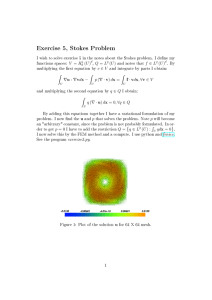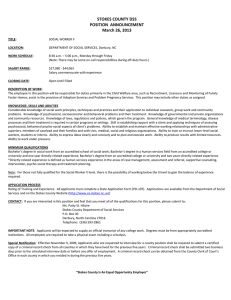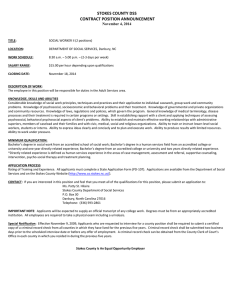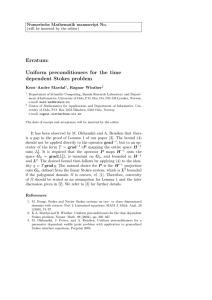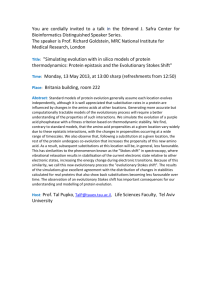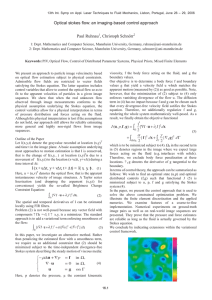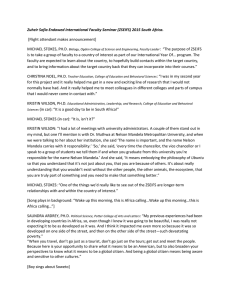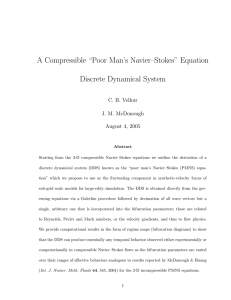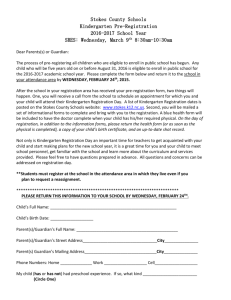Getting Started Reading Stokes (1864)
advertisement
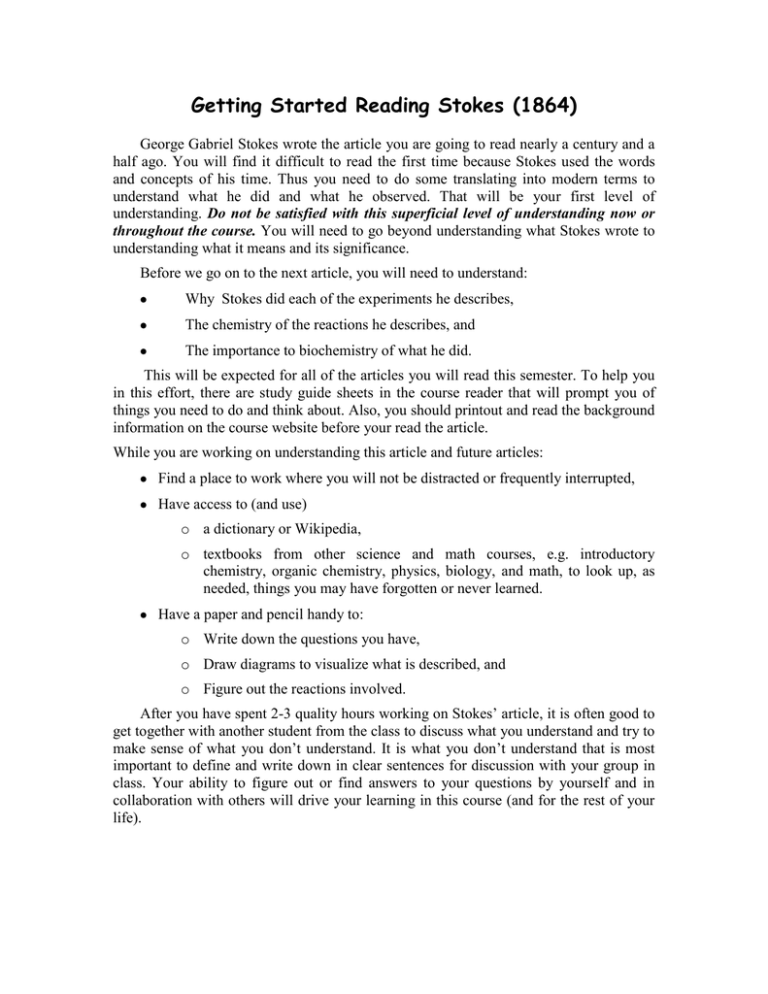
Getting Started Reading Stokes (1864) George Gabriel Stokes wrote the article you are going to read nearly a century and a half ago. You will find it difficult to read the first time because Stokes used the words and concepts of his time. Thus you need to do some translating into modern terms to understand what he did and what he observed. That will be your first level of understanding. Do not be satisfied with this superficial level of understanding now or throughout the course. You will need to go beyond understanding what Stokes wrote to understanding what it means and its significance. Before we go on to the next article, you will need to understand: Why Stokes did each of the experiments he describes, The chemistry of the reactions he describes, and The importance to biochemistry of what he did. This will be expected for all of the articles you will read this semester. To help you in this effort, there are study guide sheets in the course reader that will prompt you of things you need to do and think about. Also, you should printout and read the background information on the course website before your read the article. While you are working on understanding this article and future articles: Find a place to work where you will not be distracted or frequently interrupted, Have access to (and use) o a dictionary or Wikipedia, o textbooks from other science and math courses, e.g. introductory chemistry, organic chemistry, physics, biology, and math, to look up, as needed, things you may have forgotten or never learned. Have a paper and pencil handy to: o Write down the questions you have, o Draw diagrams to visualize what is described, and o Figure out the reactions involved. After you have spent 2-3 quality hours working on Stokes’ article, it is often good to get together with another student from the class to discuss what you understand and try to make sense of what you don’t understand. It is what you don’t understand that is most important to define and write down in clear sentences for discussion with your group in class. Your ability to figure out or find answers to your questions by yourself and in collaboration with others will drive your learning in this course (and for the rest of your life).

